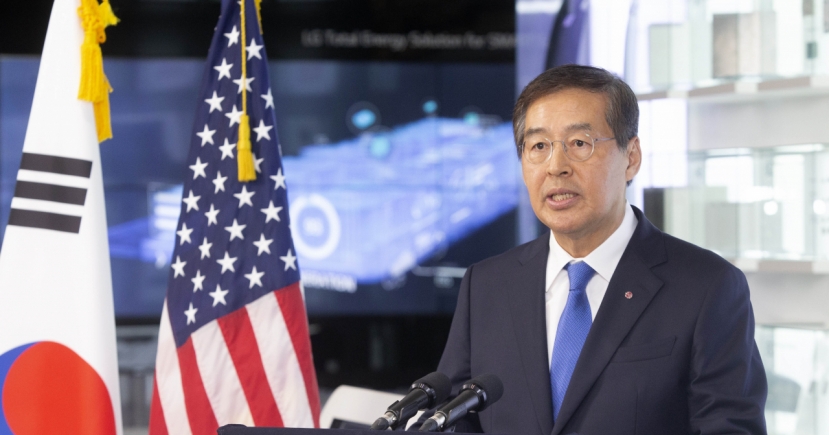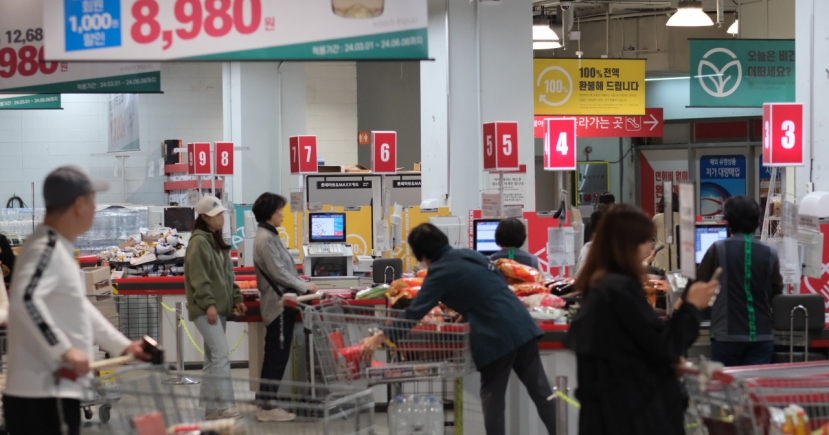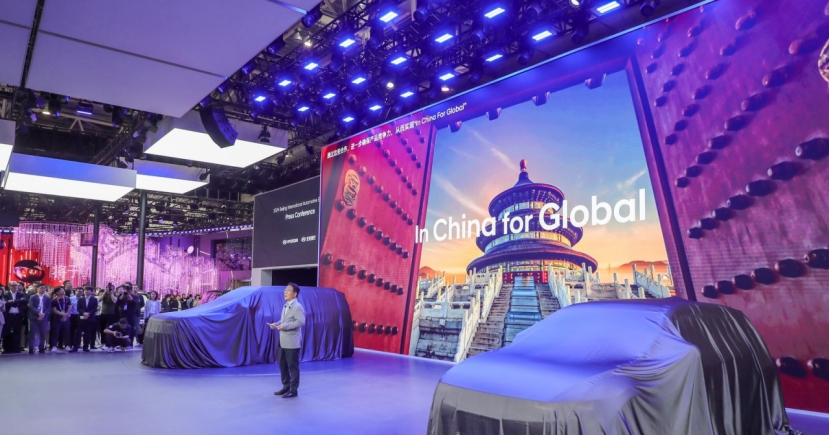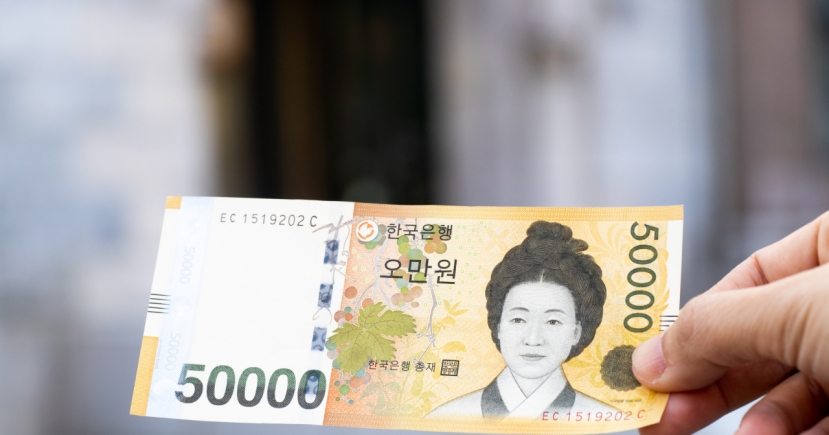Industrials
Samsung, LG’s OLED dominance may last at least 5 years
[THE INVESTOR] The dominance of organic light-emitting diode panels by South Korean display makers Samsung Display and LG Display is expected to last for at least the next five years, despite aggressive investment by Chinese and Japanese firms, Korean analysts said on Jan.10.
Amid growing demand for OLED panels from global smartphone makers -- including Apple, Huawei, Oppo and Vivo -- due to their flexible nature, Chinese and Japanese firms are making heavy investments in the market dominated by the two Korean firms.
China’s tech giant BOE plans to invest around 8 trillion won ($6.6 billion) to mass produce OLEDs by 2019 on the back of government support. Another Chinese firm Ever Display is also establishing an OLED plant with an investment of around 4.6 trillion won.
Taiwan-based Hon Hai and its subsidiary Sharp reportedly plan to invest 1.3 trillion won, with the aim of supplying OLEDs to Apple. Japan Display also recently acquired Japanese OLED maker JOELD for around 12 billion won.
Despite the aggressive push by the foreign firms, Korean experts predicted that the OLED dominance of Korean firms could last for a considerable period of time due to their technology advances.
“Korean display makers’ OLED dominance may last at least five years due to the technology gap with Chinese and Japanese firms,” said Lee Chang-hee, a professor researching OLED technologies at Seoul National University.
“This applies to flat and flexible OLEDs in both smartphones and televisions,” he added.
Kim Hyun-jae, a professor at Yonsei University’s electronics engineering, said, “Chinese OLED makers are expected to take off at least four years later due to technical issues. Japanese firms -- which make smaller investments compared to Korean and Chinese firms -- may not survive because of economies of scale.”
Samsung Display is currently the biggest beneficiary of the growing OLED demand, with more than 95 percent of share in the global OLED market for smartphones. It will reportedly supply OLED panels for around 100 million units of Apple’s new iPhone 8 to be unveiled this autumn.
Samsung’s Korean rival LG Display is also fast shifting its investment from liquid crystal displays to OLEDs for smartphone panels. The firm is building OLED production facilities in Gumi and Paju with a total investment of 3.5 trillion won. LG, which is expected to supply OLEDs to Apple from 2018, is also closely working with the iPhone maker to develop foldable panels.
“The OLED technology of Japanese and Chinese firms is at least three years behind Korean firms. Only Korean firms are expected to supply a meaningful amount of flexible OLED panels to Apple over the next three years,” said Kim Dong-won, an analyst at Hyundai Securities.
Still, the Korean firms are not in a position to be complacent with the current favorable market conditions, they said.
“It is true that the aggressive push by Chinese firms are becoming a threat in the mid-to-long term. We should make a leap forward with advanced technologies such as foldable panels to pull ahead of rivals,” said an anonymous official from Samsung Display.
By 2019, 42 percent of total smartphones in the global market will use OLED panels, market research firm IHS Markit predicted.
By Shin Ji-hye/The Korea Herald (shinjh@heraldcorp.com)
Amid growing demand for OLED panels from global smartphone makers -- including Apple, Huawei, Oppo and Vivo -- due to their flexible nature, Chinese and Japanese firms are making heavy investments in the market dominated by the two Korean firms.
China’s tech giant BOE plans to invest around 8 trillion won ($6.6 billion) to mass produce OLEDs by 2019 on the back of government support. Another Chinese firm Ever Display is also establishing an OLED plant with an investment of around 4.6 trillion won.
Taiwan-based Hon Hai and its subsidiary Sharp reportedly plan to invest 1.3 trillion won, with the aim of supplying OLEDs to Apple. Japan Display also recently acquired Japanese OLED maker JOELD for around 12 billion won.
Despite the aggressive push by the foreign firms, Korean experts predicted that the OLED dominance of Korean firms could last for a considerable period of time due to their technology advances.
“Korean display makers’ OLED dominance may last at least five years due to the technology gap with Chinese and Japanese firms,” said Lee Chang-hee, a professor researching OLED technologies at Seoul National University.
“This applies to flat and flexible OLEDs in both smartphones and televisions,” he added.
Kim Hyun-jae, a professor at Yonsei University’s electronics engineering, said, “Chinese OLED makers are expected to take off at least four years later due to technical issues. Japanese firms -- which make smaller investments compared to Korean and Chinese firms -- may not survive because of economies of scale.”
Samsung Display is currently the biggest beneficiary of the growing OLED demand, with more than 95 percent of share in the global OLED market for smartphones. It will reportedly supply OLED panels for around 100 million units of Apple’s new iPhone 8 to be unveiled this autumn.
Samsung’s Korean rival LG Display is also fast shifting its investment from liquid crystal displays to OLEDs for smartphone panels. The firm is building OLED production facilities in Gumi and Paju with a total investment of 3.5 trillion won. LG, which is expected to supply OLEDs to Apple from 2018, is also closely working with the iPhone maker to develop foldable panels.
“The OLED technology of Japanese and Chinese firms is at least three years behind Korean firms. Only Korean firms are expected to supply a meaningful amount of flexible OLED panels to Apple over the next three years,” said Kim Dong-won, an analyst at Hyundai Securities.
Still, the Korean firms are not in a position to be complacent with the current favorable market conditions, they said.
“It is true that the aggressive push by Chinese firms are becoming a threat in the mid-to-long term. We should make a leap forward with advanced technologies such as foldable panels to pull ahead of rivals,” said an anonymous official from Samsung Display.
By 2019, 42 percent of total smartphones in the global market will use OLED panels, market research firm IHS Markit predicted.
By Shin Ji-hye/The Korea Herald (shinjh@heraldcorp.com)






![[KH Explains] Korean shipbuilding stocks rally: Real growth or bubble?](http://res.heraldm.com/phpwas/restmb_idxmake.php?idx=151&simg=/content/image/2024/04/25/20240425050656_0.jpg)
![[Hello India] Hyundai Motor vows to boost 'clean mobility' in India](http://res.heraldm.com/phpwas/restmb_idxmake.php?idx=151&simg=/content/image/2024/04/25/20240425050672_0.jpg)
